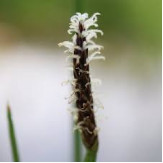In Vitro Phytochemical, Antioxidant, and Antibacterial Evaluations of Various Extracts of Eleocharis dulcis (Burm.f.) Trin. ex Hensch http://www.doi.org/10.26538/tjnpr/v7i5.11
Main Article Content
Abstract
Eleocharis dulcis Burm.f. Trin. ex Hensch, has been empirically used in Chinese folk medicine to treat cough, laryngitis, hepatitis, enteritis, hypertension, and pharyngitis. The study is aimed to compare the phytochemical components, antioxidant and antibacterial activity of hexane (H), ethyl acetat (EA), and methanol extracts (MeOH) extracts obtained by Ultrasonic Assisted Extraction (UAE) method. Total Phenolic Content (TPC) was determined by the Folin-Ciocalteu method and Total Flavonoid Content (TFC) by quercetin method. Antioxidants activity using the DPPH, ABTS, and FRAP method. The inhibition zone of antibacterial activity using the disc diffusion method and Minimum Inhibitory Concentration with microdilution method. Results of the extracts’ total phenolic and flavonoid contents showed that EA has a higher content of these phytochemicals. The EA also exhibited a higher zone of inhibition for each concentration against Aeromonas hydrophila (AHA), Aeromonas salmonicida (AS), and Streptococcus agalactiae (SA). The MIC of EA against AHA and AS was 6.25 mg/mL and 3.125 mg/mL, respectively. All
extracts were effective against SA with MIC of 1.5625 mg/mL. Similarly, the EA extract showed better ntibacterial activity against all the tested bacteria strains than the H and MeOH extracts. Also, the EA extract exhibited better antioxidant activity compared to others, with IC50 values of 52.830 ± 0.271 ppm, 16.923 ± 0.047 ppm and 198.504 ± 1.490 µmol/g in the DPPH, ABTS and FRAP assays, respectively. The study concludes that the EA extract of E. dulcis possesses better antibacterial and antioxidant activities.
Downloads
Article Details

This work is licensed under a Creative Commons Attribution-NonCommercial-NoDerivatives 4.0 International License.
References
Verma S, Nakin MDV, Makhosayafana Z, Lall N. The Role of Aquatic Plants in Natural Products and Drug Discovery. Lett Drug Des Discov. 2023;20(4):386-407.
Zhang Y, Xu H, Hu Z, Guihong Y, Xiaojin Y, Qianfeng C, Lixue Z, Zhaowei Y. Eleocharis dulcis corm: phytochemicals, health benefits, processing and food products. J Sci Food Agric. 2022;102(1):19-40.
You Y, Duan X, Wei X, Su X, Zhao M, Sun J, Ruenroengklin N, Jiang Y. Identification of major phenolic compounds of Chinese water chestnut and their antioxidant activity. Molecules. 2007;12(4):842-852.
Raghukumar C. Marine fungal biotechnology: An ecological perspective. Fungal Divers. 2008;31:19-35.
Ramadhani DA, Nugraha MFI, Novita H, Rajamuddin MAL, Elya B. Chemical compounds screening of leaves extract from eleocharis dulcis (Burm.f.) trin. ex hensch and in vitro antibacterial pathogenic test for fish. AACL Bioflux. 2020;13(5):2770-2778.
Zhan G, Pan L-Q, Mao S-B, Zhang W, Wei Y-Y, Tu K. Study on antibacterial properties and major bioactive constituents of Chinese water chestnut (Eleocharis dulcis) peels extracts/fractions. Eur Food Res Technol. 2014;238(5):789- 796.
Ahmadi SM, Farhoosh R, Sharif A, Rezaie M. Structure‐ Antioxidant Activity Relationships of Luteolin and Catechin. J Food Sci. 2020;85(2):298-305.
Wang Q, Xie M. [Antibacterial activity and mechanism of luteolin on Staphylococcus aureus]. Wei Sheng Wu Xue Bao. 2010;50(9):1180-1184.
Prastiwi R, Elya B, Hanafi M, Desmiaty Y, Sauriasari R. The Antioxidant Activity of Sterculia stipulata Korth Woods and Leaves by FRAP Method. Pharmacogn J. 2020;12(2):236- 239.
Nur S, Sami FJ, Marwati M, Nursamsiar N, Fadri A, Khairuddin K. Phenolic and Flavonoid Content of Black Mulberry (Morus nigra L.) Stem and Their Evaluation Antioxidant and Cytotoxic Profile. Borneo J Pharm. 2022;5(4):384-395.
Mitic V, Jovanovic VS, Dimitrijevic M, Cvetkovic J, Stojanovic G. Effect of Food Preparation Technique on
Antioxidant Activity and Plant Pigment Content in Some Vegetables Species. J Food Nutr Res. 2013;1(6):121-127.
Apak R, Güçlü K, Özyürek M, Çelik SE. Mechanism of antioxidant capacity assays and the CUPRAC (cupric ion reducing antioxidant capacity) assay. Microchim Acta. 2008;160(4):413-419.
Nur S, Mubarak F, Jannah C, Winarni DA, Rahman DA, Hamdayani LA, Sami FJ. Total phenolic and flavonoid compounds, antioxidant and toxicity profile of extract and fractions of paku atai tuber (Angiopteris ferox Copel). Food Res. 2019:734-740.
Tripathi N, Sapra A. Gram Staining.; 2022.
Horváth G, Bencsik T, Ács K, Kocsis B. Sensitivity of ESBL-Producing Gram-Negative Bacteria to Essential Oils, Plant Extracts, and Their Isolated Compounds. Antibiot Resist Mech New Antimicrob Approaches. 2016:239-269.
Silvyana AE, Rahmasari R, Elya B. Azadirachta indica Hexane Extract: Potent Antibacterial Activity Against Propionibacterium acne and Identification of its Chemicals Content. Pharmacogn J. 2022;14(3):489-496.
Avilés J, Uquiche E, Marillán C, Quevedo-León R. Threestage sequential supercritical extraction in fixed bed extractor to obtain bioactive compounds from Leptocarpha rivularis leaves. J Appl Res Med Aromat Plants. 2023:100460.
Monroy YM, Rodrigues RAF, Rodrigues MVN, Sant’Ana AS, Silva BS, Cabral FA. Brazilian green propolis extracts obtained by conventional processes and by processes at high pressure with supercritical carbon dioxide, ethanol and water. J Supercrit Fluids. 2017;130:189-197.
Rasyid R, Oktavia Y, Ismet F, Rivai H. Characterization of Simplicia and Ethanol Extracts of Bark of Asam Kandis (Garcinia cowa Roxb). Int J Pharm Sci Med. 2018;3:1-9.
Sami FJ, Soekamto NH, Firdaus, Latip J, Nur S. Antibacterial activity and total phenol contents of Sargassum polycystum extract against Escherichia coli and Staphylococcus aureus. Plant Cell Biotechnol Mol Biol. 2020;21(43-44):1-7.
Atanassova M, Georgieva S, Ivancheva K. Total phenolic and total flavonoid contents, antioxidant capacity and biological contaminants in medicinal herbs. J Univ Chem Technol Metall. 2011;46(1):81-88.
Ahmad AR, Mun’im A, Elya B. Study of Antioxidant Activity With Reduction of Dpph Radical and Xanthine
Oxidase Inhibitor of the Extract of Ruellia Tuberosa Linn Leaf. Int J Pharm. 2012;3:66-70.


